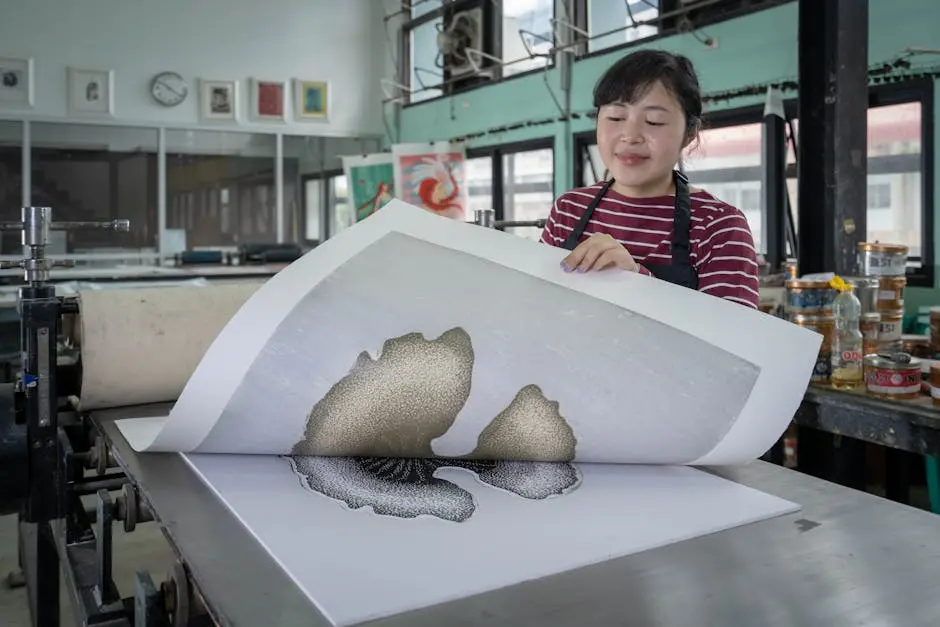Direct to film printing is revolutionizing the way we create detailed prints. With this method, you can achieve levels of detail that were previously difficult, if not impossible, to reach. In this blog, we’ll explore what direct to film printing is, how it works, and the benefits it offers. By the end of this post, you’ll have a clear understanding of how to utilize this technique to elevate your printing projects.
What is Direct to Film Printing?
Direct to film printing (DTF) is a process where images are directly printed onto film, and then the film is transferred onto the desired material. This method stands out for its ability to produce high-resolution and vibrant prints, making it ideal for detailed designs.
What sets DTF apart is its versatility. Unlike traditional methods such as screen printing or direct-to-garment (DTG) printing, DTF can be applied to a wide range of materials, from cotton and polyester to leather and even wood. This flexibility opens up a world of possibilities for creative projects.
One of the key advantages of DTF is its ability to capture intricate details with clarity. Fine lines, gradients, and complex color combinations are rendered beautifully, making this technique a favorite for designers who prioritize precision. Whether you’re working on custom apparel, promotional items, or art prints, DTF gives you the tools to make your designs stand out.
How Does Direct to Film Printing Work?
The DTF printing process involves several steps. First, the design is created or selected digitally. Then, specialized inks are used to print this design onto a transparent film. This film, with the printed image, is then transferred to the fabric or other materials using heat and pressure.
To begin, you need a high-quality digital file of your design. This file is prepared using design software, where you can make any necessary adjustments to ensure the best possible print quality. Once the design is ready, it’s printed onto a special DTF film using an inkjet printer with compatible DTF inks. These inks are formulated to adhere well to the film and produce vibrant, long-lasting colors.
After the design has been printed onto the film, a layer of powdered adhesive is applied to the printed side. This adhesive ensures that the design will firmly bond to the fabric during the transfer process. The film is then heated to melt the adhesive slightly, allowing it to stick to the ink and making it ready for transfer.
The final step involves placing the prepared film onto the fabric and applying heat and pressure using a heat press. This step is crucial, as the right combination of heat and pressure will ensure that the design transfers cleanly and adheres properly to the material. Once the transfer is complete, the film is peeled away, revealing a detailed, vibrant print on the fabric.
Benefits of Direct to Film Printing
Direct to film printing offers numerous benefits, including exceptional detail and color vibrancy, versatility with various materials, and durability of the final print. These advantages make it a popular choice for both commercial and personal projects.
One of the standout benefits of DTF printing is its cost-effectiveness for short runs. Unlike screen printing, which requires a new screen for each design, DTF allows you to print multiple designs without significant setup costs. This makes it ideal for small businesses, custom orders, and niche markets where unique, detailed designs are essential.
In addition to cost savings, DTF printing is known for its durability. The prints are resilient and can withstand multiple washes without fading or cracking. This longevity makes DTF a practical choice for garments and items that need to maintain their appearance over time. The combination of vibrant colors and lasting quality ensures that your designs will make a lasting impression.
Choosing the Right Materials
For optimal results with DTF printing, it’s crucial to choose the right materials. This includes selecting high-quality films, appropriate inks, and suitable fabrics or substrates that will hold the print well and showcase its details effectively.
The choice of film is particularly important. High-quality DTF films are designed to handle the intricate details and vibrant colors of your designs. They also provide a smooth transfer and good adhesion to the fabric. When selecting a film, consider factors like thickness, texture, and compatibility with your printer and inks. Investing in good quality films can make a significant difference in the final print quality.
Ink selection is another critical aspect. DTF inks are formulated to work well with the film and transfer process, ensuring vibrant colors and excellent adhesion. These inks are typically pigment-based, offering durability and color stability. It’s important to use inks that are compatible with your printer and designed specifically for DTF printing to achieve the best results.
The type of fabric or substrate you choose will also affect the outcome. DTF printing works well on a wide range of materials, but for the best results, use fabrics that have a smooth surface and are capable of withstanding the heat and pressure of the transfer process. Cotton, polyester, and blends of the two are popular choices, but experimenting with other materials can lead to unique and exciting results.
Tips for Achieving the Best Results
To get the best results with DTF printing, pay attention to detail during each step of the process. Ensure your design is high resolution, use the correct printer settings, and apply even heat and pressure when transferring the film. Practice and experimentation can also help you refine your technique.
Begin by making sure your digital design is as detailed and high-resolution as possible. Low-resolution images can appear blurry or pixelated when printed, so starting with a high-quality file is essential. When in doubt, opting for vector graphics can ensure that your design retains its clarity, no matter the size.
Tweaking your printer settings can also make a difference. Every printer and ink combination will have its unique characteristics, so it’s worth spending time experimenting with different settings to find what works best. Adjusting color profiles, print speed, and ink density can help you achieve the optimal print quality.
When it comes to the transfer process, consistency is key. Using a reliable heat press and ensuring even heat and pressure across the entire design will help prevent issues like uneven adhesion or incomplete transfers. Taking the time to calibrate your equipment and use proper transfer techniques can significantly improve the quality of your prints.
Common Challenges and How to Overcome Them
Like any printing method, direct to film printing can present challenges. Common issues include ink smudging, improper adhesion, and color inaccuracies. However, these can often be overcome with proper preparation, adequate testing, and adherence to best practices.
Ink smudging is a common issue that can be caused by various factors, such as inadequate drying time or improper handling of the printed film. To prevent smudging, allow the printed film to dry thoroughly before applying the adhesive powder and avoid touching the printed surface as much as possible. Using a drying rack or placing the film in a dust-free environment can help speed up the drying process.
Improper adhesion can be frustrating, but it’s often solvable with a few adjustments. Make sure you’re using the correct heat and pressure settings for the material you’re working with. Investing in a quality heat press with precise temperature and pressure controls can make a big difference. Additionally, ensure the fabric is clean and free from any contaminants that could interfere with the adhesion process.
Color inaccuracies can occur if your design doesn’t look the same on the printed film as it does on your screen. This can be due to differences in color profiles or calibration issues with your printer. To mitigate this, use color management tools to calibrate your monitor and printer, and run test prints to ensure the colors are accurate before proceeding with the final print.
Elevate Your Print Quality with Direct to Film Printing
Direct to film printing offers numerous advantages for those looking to achieve unmatched detail in their prints. Whether you’re a hobbyist or a professional, this technique provides the versatility and quality needed to bring your designs to life. With the tips and knowledge shared in this article, you’re well-equipped to take your printing projects to the next level. Happy printing!






